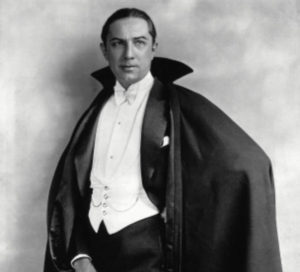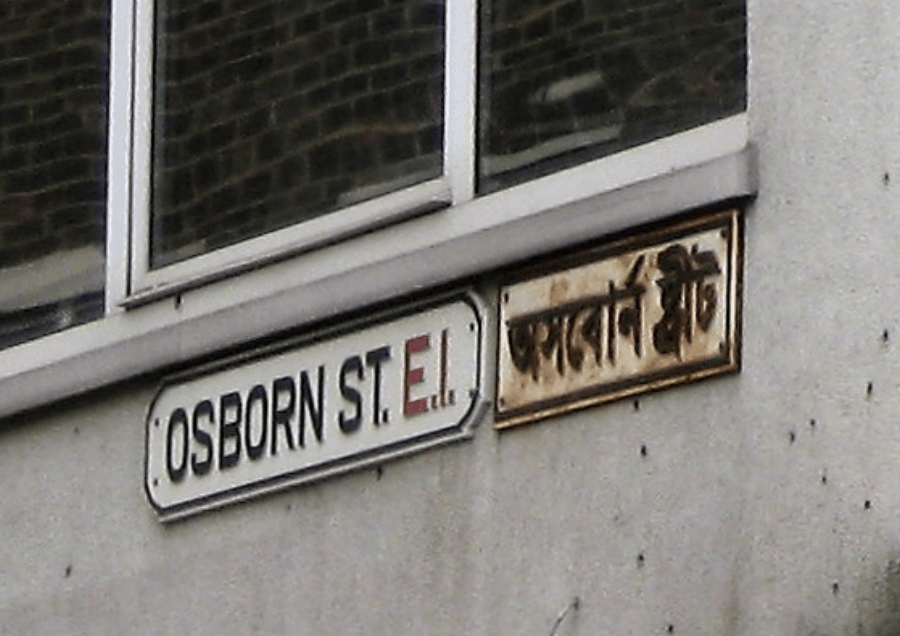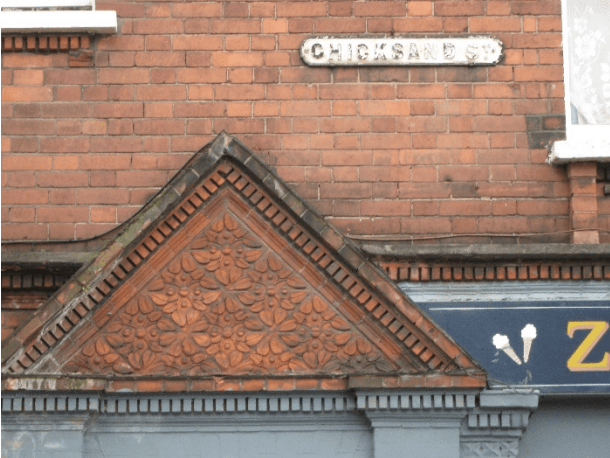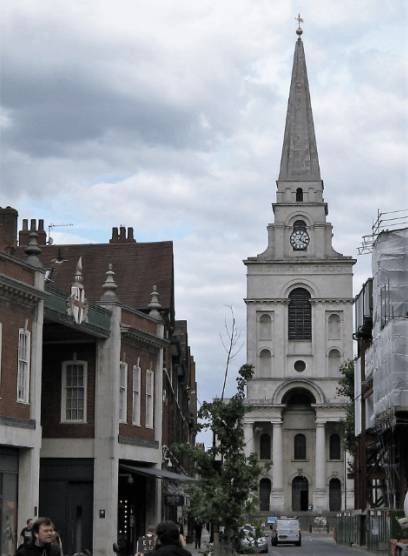‘Chicksanguine’

By Lester Hillman
Spitalfields, immediately east of the City of London, is an area historically associated with the Huguenot community. But place names point to ownership roots in Bedfordshire. Osborn is the family name long associated with Chicksands Priory and from Whitechapel, Osborn Street becomes Brick Lane (today famous for curry houses).

Chicksand Street is 270 yards long, incorporating Osborn Place one of many courts and alleys that have disappeared. A walk down Chicksand Street offers few clues to life and times in the past, but ‘Fashion Street’ nearby soon brings you to what was once Borer’s Passage where a drill hall housed an early outpost of today’s 3MI Bn.

Other insights can be found in surprising places. Here is a gem buried deep in Dracula, one of the most famous novels of the nineteenth century: ‘There were, he said, six in the cartload which he took from Carfax and left at 197 Chicksand Street, Mile End, New Town, and another six which he deposited at Jamaica Lane, Bermondsey’. So relates one Joseph Smollett at home in Walworth on the night of 1 October. His recollection of moving boxes with his colleague Thomas Snelling of Bethnal Green, earns him half a sovereign from Jonathan Harker who is trying to piece together Count Dracula’s sinister property portfolio in London.
Bram Stoker’s Dracula (‘Un-Dead’ had been an original title for the book) was published 26 May. It had a print run of 3,000 and was priced at six shillings. By 1913 it was in its tenth edition. It has gone on to inspire countless novels and films. Stoker was about to turn fifty when Dracula, his fifth novel, was published. He wrote twelve novels before his death in 1912 (his cremated remains are in Golders Green Crematorium). Two of his books had been published in 1895. Dracula, at over 400 pages, is one of his longer works and it was followed by Miss Betty in 1898. Dracula is set late in the nineteenth century, populated with characters using phonographic diaries and hopping aboard the Metropolitan Line underground.
On 3 October, two days later in the story, Harker and others gain entry to Count Dracula’s imposing Central London property at 347 Piccadilly. Although renumbering has taken place, today’s RAF Club at 128 Piccadilly, looking out over Green Park, could fit the bill. Around lunchtime three of the group alight from a cab at the corner with Arlington Street (The Ritz) and saunter into Green Park to observe the house inconspicuously: ‘I saw the house on which so much of our hope was centred, looming up grim and silent in its deserted condition amongst its more lively and spruce-looking neighbours’. Meanwhile, two colleagues hire a locksmith to pick the lock. Once inside, eight boxes of earth are
found, more from the total consignment of fifty boxes that had arrived at King’s Cross from Whitby and been shipped onward to ‘Carfax’ at Purfleet. (I’ve always had a funny feeling about the RAF Club.)
Dracula was published not that long after the notorious murders in and around Whitechapel. Bram Stoker had a day job as manager of London’s Lyceum Theatre for 27 years. He would surely have been alert to the value of planting his story in amongst the streets prowled by Jack the Ripper. In 1897 it would have been highly topical; more than a century on it still is.

In the Piccadilly house, Dracula’s adversaries discover all the property deeds including those to 197 Chicksand Street. Perhaps Bram Stoker even imagined Harker, Van Helsing and the others poring over an acquisition tracing back to the Osborn estate. A heap of keys of all sorts and sizes is also found: ‘Lord Godalming and Quincey Morris, taking accurate notes of the various addresses … took with them the keys in a great bunch, and set out to destroy the boxes in these places’. Returning some hours later, Lord Godalming confirms: ‘We found both places; six boxes in each, and we destroyed them all!’ They had now become aware that Count Dracula was chasing after them and having been to the Bermondsey address and then Chicksand Street, he arrives at Piccadilly. There is a dramatic fight before Dracula escapes out the back. His adversaries depart in the late afternoon (it is not clear if or how they neutralise the eight boxes of earth at Piccadilly). However, Professor Abraham Van Helsing, Doctor of Medicine, Philosophy, Literature and more, is careful to take all the property deeds, perhaps those for 197 Chicksand Street are still with his estate.


